Xinjiang cotton stretches out to bigger market
-- The cotton and textile industry in Xinjiang Uygur Autonomous Region has shown resilience by further tapping markets and winning over more customers with its superior quality.
-- From January to July, Xinjiang's export volume witnessed a robust year-on-year growth of 33.2 percent, reaching 64.87 billion yuan (10 billion U.S. dollars). The exports of textile and garments saw a staggering year-on-year growth of 65.6 percent during the period.
-- As the region opens more to the world, the sustained recovery of Xinjiang's foreign trade has boosted the confidence of foreign business partners to expand a broader market and seek win-win cooperation.
URUMQI, Aug. 29 (Xinhua) -- In the workshop of a textile company in northwest China's Xinjiang Uygur Autonomous Region, workers were busy packaging some 70,000 pieces of knitted underwear for orders from Japan.
The enterprise weathered a downturn in its export last year due to adverse effects, including the COVID-19 pandemic and U.S. groundless sanctions over Xinjiang cotton, but the trend has now reversed, said Li Lyuzhi, manager in the foreign trade department of the company based in the regional capital Urumqi.
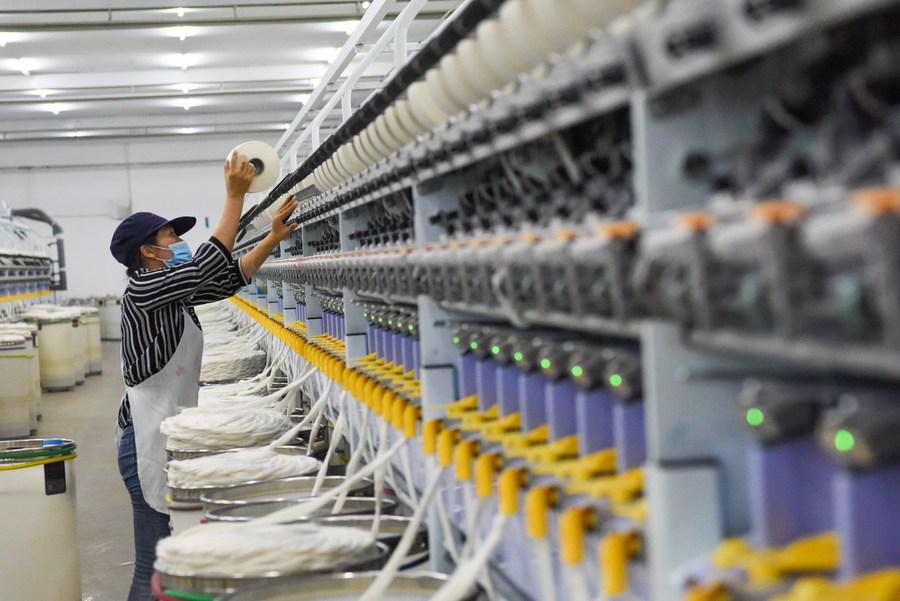
File photo shows a worker busy working in a workshop of a textile company in Yuli County of northwest China's Xinjiang Uygur Autonomous Region, Aug. 24, 2020. (Xinhua/Ding Lei)
The company is among some 100 cotton and textile firms displaying their high-quality products at the (China) Eurasia Commodity and Trade Online Expo (EACT Expo) 2021 that opened on Aug. 25, both online and offline. The offline part is to conclude later on Sunday, while the online exhibition will last a year.
The EACT Expo has become a significant platform for promoting economic cooperation and trade exchanges with the world since its inauguration in 2015.
"The expo this year has built an interconnected and shared digital platform for global enterprises," said Mamtimin Hadir, acting mayor of Urumqi.
The region's cotton and textile industry has shown resilience by further tapping markets and winning over more customers with its superior quality.
The intelligent apparel production equipment brand Qonvolv is participating in the online exhibition. It is under the technical support of a Hong Kong-based textile and apparel manufacturer.
"Last year, our customers, including clothing, fabrics, and textile manufacturers, had to work at full capacity to fulfill orders from domestic and foreign buyers," said Edward Ho, director of the brand.
The cotton and textile industry is one of the pillar industries in Xinjiang, and textiles are among the major commodities exported from the region.
The cotton output of Xinjiang, the country's largest growing area for the crop, exceeded 5.16 million tonnes in 2020, accounting for 87.3 percent of China's total, figures show. The regional statistics bureau said Xinjiang's cotton output would remain stable in 2021.
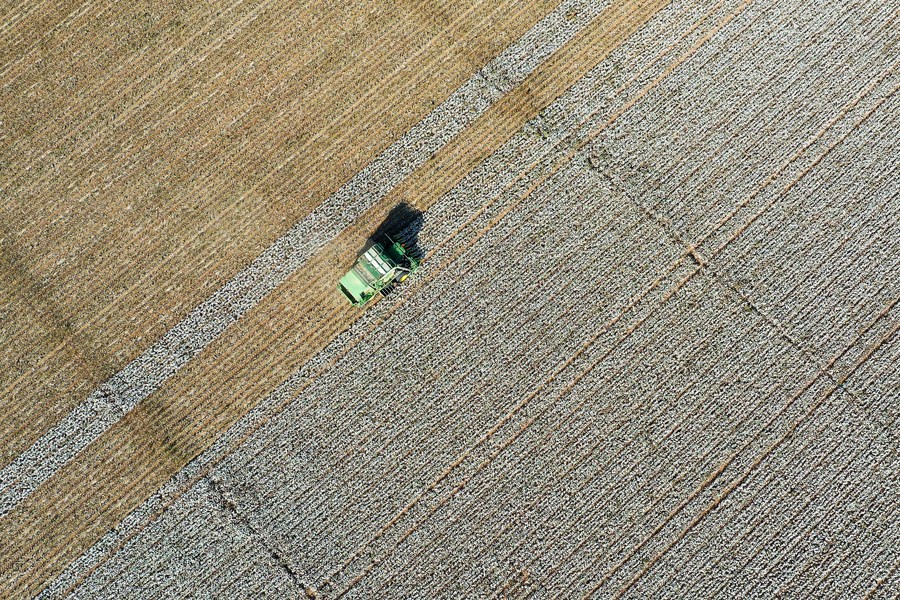
Aerial file photo taken on Oct. 17, 2020 shows a machine harvesting cotton in a field in Wenjiazhuang Village, Manas County of northwest China's Xinjiang Uygur Autonomous Region. (Xinhua/Ding Lei)
From January to July, Xinjiang's export volume witnessed a robust year-on-year growth of 33.2 percent, reaching 64.87 billion yuan (10 billion U.S. dollars). The exports of textile and garments saw a staggering year-on-year growth of 65.6 percent during the period.
As the region opens more to the world, the sustained recovery of Xinjiang's foreign trade has boosted the confidence of foreign business partners to expand a broader market and seek win-win cooperation.
More than 500 government officials and representatives from business associations and enterprises from home and abroad discussed strengthening economic cooperation, trade exchanges and achieving mutual benefits via a video link during the expo.
Badar uz Zaman, commercial counsellor of Pakistan Embassy in Beijing, said that China is one of Pakistan's largest partners and Pakistan hopes to deepen exchanges and cooperation with Xinjiang in fields like agriculture, industry and infrastructure construction through the expo.
According to Ulakhovich Vladimir Evgenievich, chairman of the Belarusian Chamber of Commerce and Industry, more than 70 Belarusian enterprises participated in the online exhibition of the expo, and he looked forward to further exploring the Chinese market for Belarusian enterprises through the fair.
Zhu Junfeng, manager for the Asian Region of Trade and Investment Department of the government of the South Australia state, Australia, said 18 enterprises from the state participated in the expo.
According to Zhu, Australia is a member of the Regional Comprehensive Economic Partnership (RCEP), and South Australia wants to continue to strengthen its exchanges and cooperation with Xinjiang in the economy, trade, and investment.
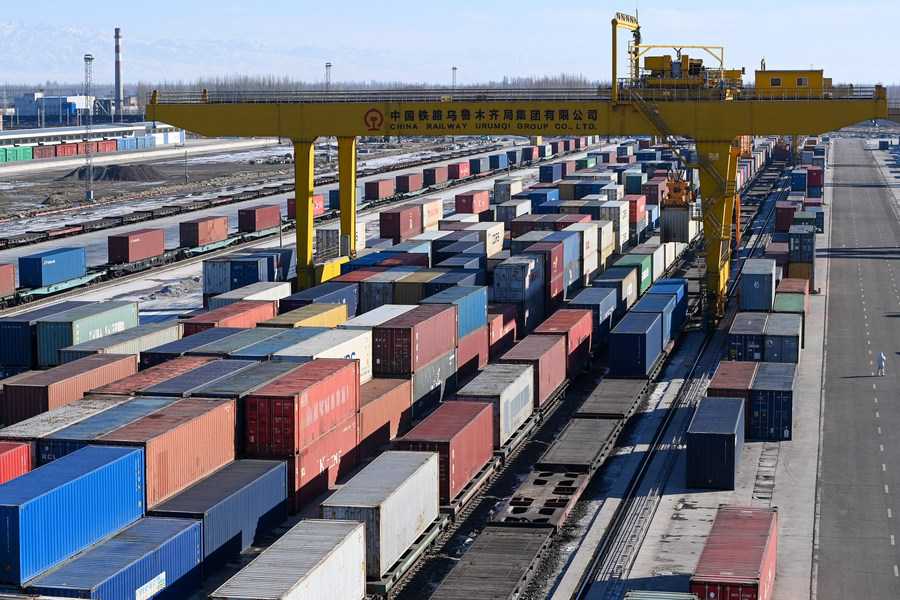
Containers are seen at the Horgos Port in northwest China's Xinjiang Uygur Autonomous Region, Feb. 6, 2021. (Xinhua/Ding Lei)
An Caili, sales manager of a 40-year-old textile enterprise in Xinjiang, said the expo will help their products reach out to an even bigger market both at home and abroad.
"Via the expo, more local textile brands in Xinjiang are expected to go global, and I believe more people will know and buy textile products made of Xinjiang cotton," said An.
Photos
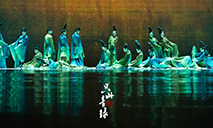 Dance show saluting traditional culture of the Song Dynasty makes its debut
Dance show saluting traditional culture of the Song Dynasty makes its debut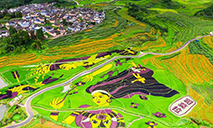 Village in SW China’s Yunnan embraces prosperity through agricultural tourism
Village in SW China’s Yunnan embraces prosperity through agricultural tourism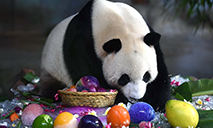 Eighth birthday for pair of giant pandas celebrated in Haikou, Hainan province
Eighth birthday for pair of giant pandas celebrated in Haikou, Hainan province Olympic gold medalists portrayed in Shanxi artist’s polymer clay sculptures
Olympic gold medalists portrayed in Shanxi artist’s polymer clay sculptures
Related Stories
- Photothermal power station in Hami, Xinjiang
- Eurasia commodity online expo opens in China's Xinjiang
- Explore fascinating autumnal vistas in NW China's Xinjiang
- Inside Xinjiang: Unveil the truth of vocational education, training centers
- Xinjiang’s Jeminay County paints a vivid picture of bright dandelions
Copyright © 2021 People's Daily Online. All Rights Reserved.






